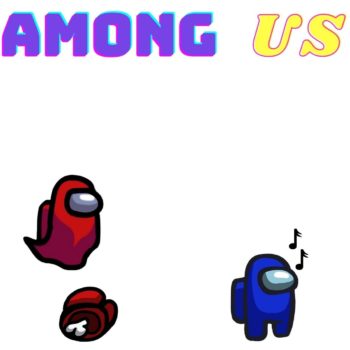 What is “Among Us”?
What is “Among Us”?
By Drew Rinehart
Murder, mystery, task, and intelligence. You may be thinking this is the storyline of a Sherlock Holmes movie, but you’d be wrong. This is the plot of the biggest game of 2020, “Among Us.”
“Among Us” is a PC and mobile multiplayer game that was released in June of 2018, but caught the eye of many big-named gamers this year. For PC users it costs $5, but you can get it for free on mobile devices.
As of November, the game is the third most live-streamed game on Twitch and has been downloaded more than 200 million times on mobile, as well as more than 40 million times on desktop.
In the game there are two different types of people: the crewmates and the imposters. There are three different maps and the choice of having 1-3 imposters. There also has to be a minimum of seven players.
The objective of the game as a crewmate is to complete tasks, try to survive, and figure out who the imposters are. Crewmates have a variety of tasks ranging from scans at the medbay to fixing the lights in electrical. They also have the job of discussing with the other players who they think the imposter is, but the only way to discuss with other players is to report a dead body or hit the emergency meeting button.
If the crewmates complete all of their tasks or get all the imposters out then they win. There are some flaws while playing as a crewmate if you aren’t playing with friends, and that’s the human factor. Some people like to call out a random person without any evidence and they end up getting voted off. That’s why playing with friends makes it better and more exciting.
The imposters have a different job. Imposters must run around faking tasks while trying to kill all the crewmates. Imposters also have different abilities that can help them win the game easier. Some things the imposters can do that crewmates can’t are being able to vent, which gets you around the map faster and allows you to hide, and the ability to sabotage the lights, oxygen, and the reactor. They are also able to shut doors to lock players into certain rooms. The imposters win the game by killing all the crewmates before they can complete their tasks.
There are also different game modes that you can set up within the settings. One of my favorites is hide and seek. There is only one imposter and they have very limited vision. The crewmates get the max vision and must try to complete their tasks. You can’t report dead bodies and you can’t push the emergency button. The imposter must reveal themselves at the beginning of the game so everyone can try and stay away. This game mode is interesting because it makes it more difficult for the imposters to win, but also gives more of a thrill to the game.
Among us is a great game to pass the time or do something with your friends and I highly recommend that you play it.
 The psychology of “Among Us”
The psychology of “Among Us”
By Aaron Adams
The Stanford Encyclopedia of Philosophy defines lying as “to make a false statement with the intention to deceive,” and nothing exemplifies this idea more than playing “Among Us.”
“Among Us” sounds simple enough, but the real depth comes from the deception and confusion that players face while trying to find the impostors. To get a better grasp of what the crewmates face, think of the classic trope in which two identical people claim they aren’t the clone and you must decide which to shoot.
In order to better understand the deception behind “Among Us,” we must explore the very nature of deception itself. In this exploration one question stands out: “Why do we lie?” While there are multiple factors that might compel us to lie, lying often involves the intention of deceiving another person to achieve a specific result.
The main idea behind this claim is intention. A lie is only considered a lie when the statement is made with the intention of deceiving someone. Someone may make a false statement that they believe to be true; this statement is not a lie because the speaker does not know the statement itself is false. This changes when the speaker knows the statement to be false but says it anyways in order to trick the listener into believing their statement.
The Stanford Encyclopedia of Philosophy further supports this idea by stating, “Lying requires that a person make an untruthful statement to another person with the intention that that other person believes that untruthful statement to be true.”
This is a lot of information to take in, so let’s look at an example from “Among Us.” Let’s say that a body has been found in the electrical room of the ship, a meeting is called, and the group discusses who they saw in that area. In order to deceive the rest of the group, the impostor will then claim they were in the navigation room when the body was reported. The impostor’s goal is to deceive the crew into believing his statement so that they will then be cleared of suspicion and not voted off. The impostor knows they weren’t in the navigation room, yet claims that they were in order to not get voted out. This is pure deception.
Another example of this is when the impostors begin to spread misinformation about the other crewmates in order to cast suspicion onto someone else. For example, the impostor may lie and claim that they saw the blue player running away from a dead body. If the impostor is good enough at lying to the other players, the group will vote out blue and the impostor will survive another round.
Understanding why we lie raises yet another question: “Why do we believe lies?” An article published in 2017 by Psychology Today states, “All kinds of things occur in the world around us, and we don’t always have the time or energy to sit down and carefully examine all of them. So, we tend to use quick and largely unconscious rules-of-thumb to determine what we should believe—and these shortcuts sometimes steer us in the wrong direction.” In other words, sometimes we don’t question lies in order to save brain power.
Regarding lying, our brain may take these mental shortcuts when we hear new information from someone we trust. If someone we trust tells us something that is relatively believable, we are inclined to believe them because our brains don’t want to waste the time and energy that goes with questioning them. For all you know, I could have made up everything I’ve said in this article thus far, yet you may have believed me because it’s less work for your brain than to question it. (For the record, I didn’t)
This same concept applies to “Among Us” as well. If a player hasn’t seen the green player do anything suspicious the entire game, they may be more inclined to believe the statements they make because they have a certain level of trust. If the green player is the impostor, this could work to their advantage.
The best way to combat this in-game is to increase your awareness and watch for signs that point to a deceiving player. It is always best to remain suspicious of other players unless you have undeniable proof that a player is telling the truth.
By staying wary of other players, you may be able to spot errors or false statements made by the impostor and ensure victory. However, as the impostor, use people’s trust to your advantage. Try and appear as normal as possible so that when you deceive other players they will be more inclined to believe you. A common strategy for impostors is to befriend someone as you play. Once you’ve gained someone’s trust through friendship, they are more likely to side with you even if you lie.





Comments